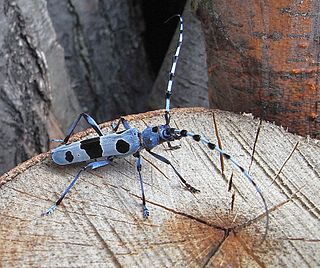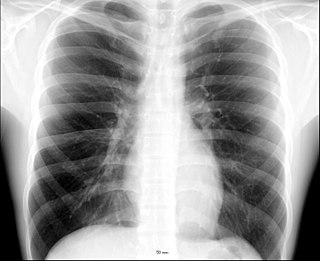| Tegra novaehollandiae | |
|---|---|
 | |
| T. novaehollandiae immunis | |
| Scientific classification | |
| Kingdom: | Animalia |
| Phylum: | Arthropoda |
| Class: | Insecta |
| Order: | Orthoptera |
| Suborder: | Ensifera |
| Family: | Tettigoniidae |
| Subfamily: | Pseudophyllinae |
| Supertribe: | Pseudophylliti |
| Tribe: | Cymatomerini |
| Genus: | Tegra |
| Species: | T. novaehollandiae |
| Binomial name | |
| Tegra novaehollandiae Haan, 1842 | |
| Subspecies | |
T.n. viridinotata Contents | |
| Synonyms | |
Tegra karnya(Willemse, 1933) | |
Tegra novaehollandiae is a species of bush crickets in the tribe Cymatomerini and the subfamily Pseudophyllinae; it is native to tropical Asia. [1] [2] [3] [4]

Insects in the family Tettigoniidae are commonly called katydids, or bush crickets. They have previously been known as long-horned grasshoppers. More than 6,400 species are known. Part of the suborder Ensifera, the Tettigoniidae are the only extant (living) family in the superfamily Tettigonioidea.

The subfamily Pseudophyllinae contains numerous species in the family Tettigoniidae, the katydids or bush crickets. Sometimes called "true katydids", together with the crickets of suborder Ensifera, they form part of the insect order Orthoptera which also contains grasshoppers.

Asia is Earth's largest and most populous continent, located primarily in the Eastern and Northern Hemispheres. It shares the continental landmass of Eurasia with the continent of Europe and the continental landmass of Afro-Eurasia with both Europe and Africa. Asia covers an area of 44,579,000 square kilometres (17,212,000 sq mi), about 30% of Earth's total land area and 8.7% of the Earth's total surface area. The continent, which has long been home to the majority of the human population, was the site of many of the first civilizations. Asia is notable for not only its overall large size and population, but also dense and large settlements, as well as vast barely populated regions. Its 4.5 billion people constitute roughly 60% of the world's population.
It has also been called Tegra karnya (Willemse, 1933), [3] Locusta novaehollandiae (Haan 1842), Tarphe novaehollandiae (Haan 1842), Tegra novae-hollandiae albostriata (de Jong), Tegra novae-hollandiae vittifemur (de Jong). [5]

















